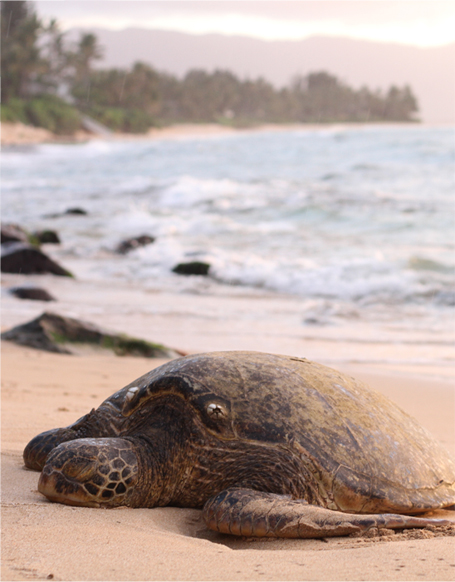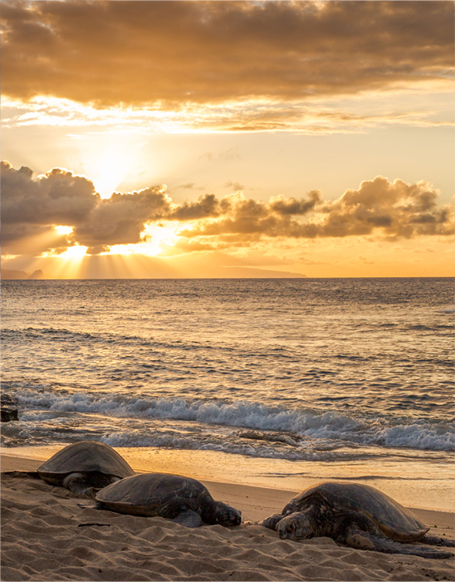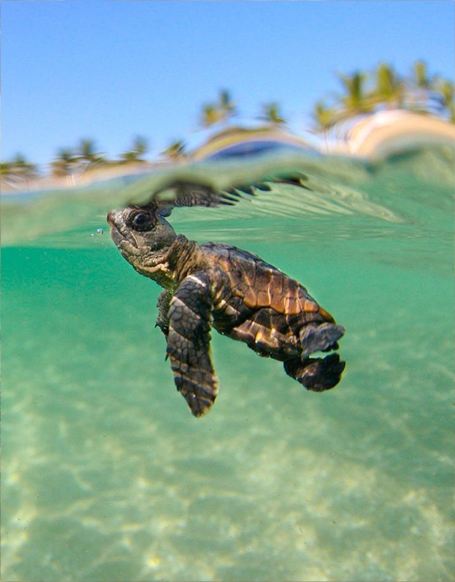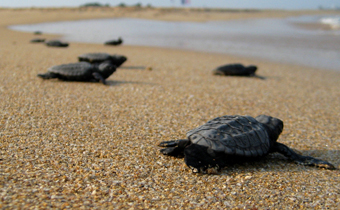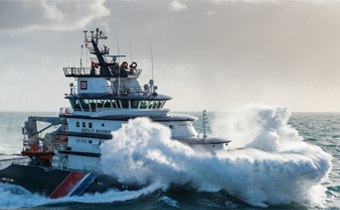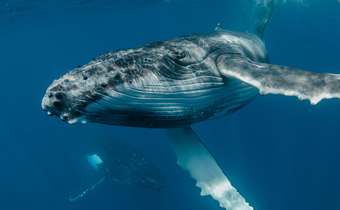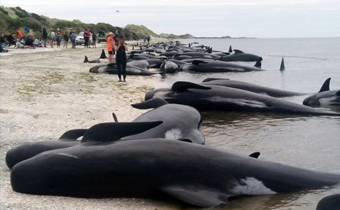
marine life
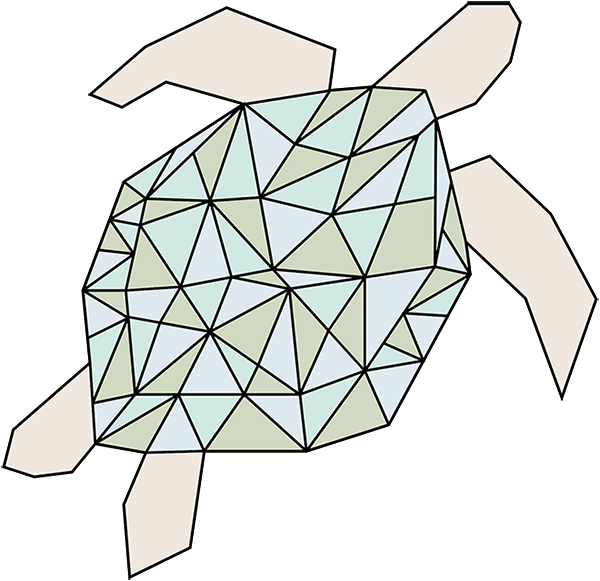
turtles
Sea turtles are a fundamental link in marine ecosystems. They help maintain the health of sea grass beds and coral reefs that benefit commercially valuable species such as shrimp, lobster and tuna.
They are the live representatives of a group of reptiles that have existed on Earth and traveled our seas for the last 100 million years. Turtles have major cultural significance and tourism value.
Human activities have tipped the scales against the survival of these ancient mariners. Nearly all species of sea turtle are classified as Endangered. Slaughtered for their eggs, meat, skin and shells, sea turtles suffer from poaching and over-exploitation. They also face habitat destruction and accidental capture in fishing gear. Climate change has an impact on turtle nesting sites. It alters sand temperatures, which then affects the sex of hatchlings.
WWF is committed to stop the decline of sea turtles and work for the recovery of the species. We work to secure environments in which both turtles—and the people that depend upon them—can survive into the future.
All stages of a sea turtle’s life are affected by environmental conditions such as temperature—even the sex of offspring. Unusually warm temperatures caused by climate change are disrupting the normal ratios, resulting in fewer male hatchlings.
Warmer sea surface temperatures can also lead to the loss of important foraging grounds for sea turtles, while increasingly severe storms and sea level rise can destroy critical nesting beaches and damage nests
Bycatch
Worldwide, hundreds of thousands of sea turtles are accidentally caught in shrimp trawl nets, on longline hooks and in fishing gillnets every year. They become fisheries bycatch--unintended catch of non-target species.
Sea turtles need to reach the surface to breathe and therefore many drown once caught. Incidental capture by fishing gear is the greatest threat to most sea turtles. This threat is increasing as fishing activity expands.
Climate Changes
All stages of a sea turtle’s life are affected by environmental conditions such as temperature—even the sex of offspring. Unusually warm temperatures caused by climate change are disrupting the normal ratios, resulting in fewer male hatchlings.
Warmer sea surface temperatures can also lead to the loss of important foraging grounds for sea turtles, while increasingly severe storms and sea level rise can destroy critical nesting beaches and damage nests.
Habitat Loss
Sea turtles are dependent on beaches for nesting. Uncontrolled coastal development, vehicle traffic on beaches and other human activities have directly destroyed or disturbed sea turtle nesting beaches around the world. Turtle feeding grounds such as coral reefs and sea grass beds are damaged and destroyed by activities onshore, including sedimentation from clearing of land and nutrient run-off from agriculture.
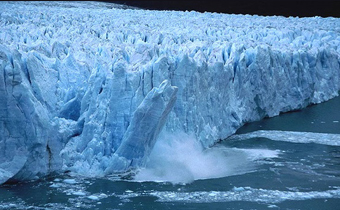
whales
Whales are at the top of the food chain and have an important role in the overall health of the marine environment. Unfortunately, their large size and mythical aura does not protect them; six out of the 13 great whale species are classified as endangered, even after decades of protection.
Whales are awe-inspiring and often elusive creatures. Their distribution and critical feeding areas are currently poorly understood, and as climate change and krill fishing increase, our time to learn more about these giant mammals is running out.
Despite living in the water, whales breathe air. And like humans, they are warm-blooded mammals who nurse their young. A thick layer of fat called blubber insulates them from cold ocean waters.
Some whales are known as baleen whales including blue, right, bowhead, sei and gray whales. This refers to the fact that they have special bristle-like structures in their mouths (called baleen) that strains food from the water. Other whales, such as beluga or sperm whales, have teeth.
Climate Change
Warming oceans and loss of sea ice in the Arctic and Antarctic can affect the habitats and food of whales. Large patches of tiny plants and animals that they feed on will likely move or change in abundance as climate change alters seawater temperature, winds and ocean currents. These changes can mean whales such as humpbacks and blues may have to migrate much further to reach feeding grounds, leaving them with less time to forage for food. The shift in food availability due to climate fluctuations has already hurt the reproductive rates of the endangered North Atlantic right whale.
Industry
Collisions with ships, entanglement in fishing gear (known as bycatch), and pollution injure and kill whales. Shipping activity and oil and gas development cause noise that can disrupt or even damage whales’ hearing. Such disturbance can exclude whales from critical feeding and breeding grounds, and disrupt their migratory paths.
Stranded Whales
Each year, thousands of whales, dolphins and porpoises become stranded on shorelines around the world. Left unaided, many die within a day or two. In the Philippines, about a dozen stranding events occur a year. WWF offers stranding rescue workshops to local residents. Training includes cetacean (whales, dolphins and porpoises) biology, identification, threats, and conservation and rescue techniques.
Commercial Whalling
Despite a moratorium on commercial whaling and a ban on international trade of whale products, countries such as Iceland continue to hunt whales for their markets. Over 1000 whales a year are killed for such commercial purposes.


